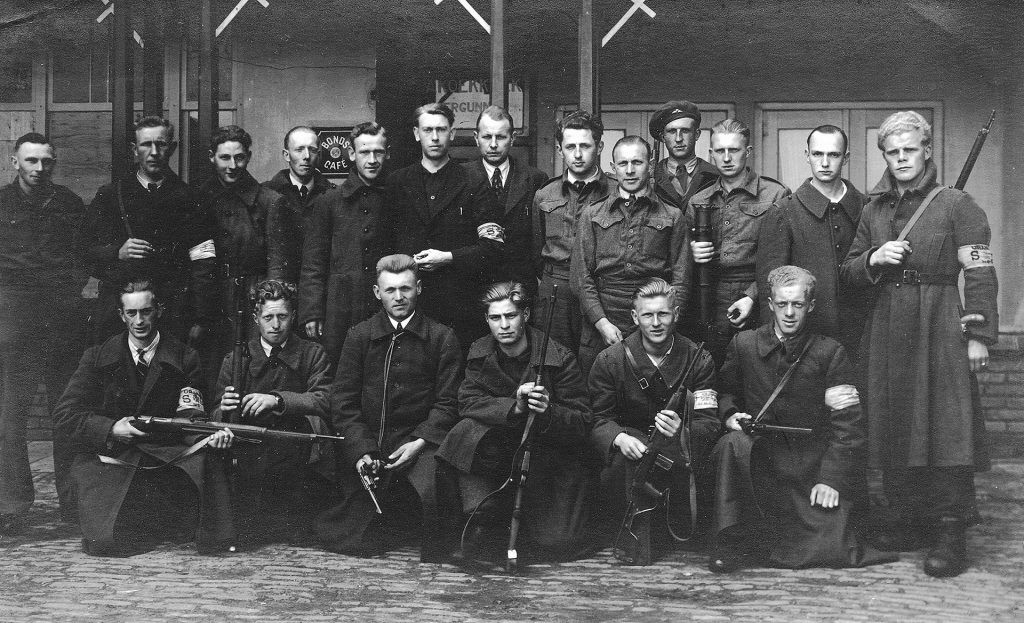From August 1944, the Stegeren field became the beating heart of the group’s activities. Under the codename “Evert,” after Captain Evert Lancker, thirteen successful air drops took place here. Each drop delivered between 15 and 28 containers of weapons, ammunition, and supplies - a total of about 48 tons of material. These goods were transported by bicycle, horse and cart, or even by boat to destinations in the northern provinces.
The Vroomshoop group, led by Commander Haselhoff, prepared for the liberation, but he was forced into hiding when raids from camp Erika increased. On 5 December 1944, he miraculously survived a German house search by concealing himself under a pile of potato sacks.
The resistance group, about twelve men in total, operated in utmost secrecy. Most came from Vroomshoop, Den Ham, Beerzerveld, Mariënberg, and surrounding areas in Twente and Salland. They hid in a forest shelter, surrounded by explosives that could be detonated if discovered.
During drops, armed members stood guard, ready to act in the event of a German raid. Despite repeated searches by the Wachgruppe Ommen from camp Erika, the group was never found. This “silence in the forest” was due in large part to the discretion and support of the people of Stegeren.
A key figure in these operations was secret agent and radio operator Jaap Beekman, alias “Maurits.” Through his radio messages, he maintained contact with the Council of Resistance in London and coordinated thirteen successful drops in Stegeren — an exceptional achievement in the Netherlands. After the war, he and his comrades were called “The Forgotten Soldiers of Orange.”
Beyond the drops, the group also carried out sabotage missions, such as undermining bridges and railway lines. They sheltered fugitives, including American pilots hidden by farmer Marinus de Bruin in Beerzerveld. Weapons from Stegeren later proved vital in confrontations with the Sicherheitsdienst.
For decades after the war, the Vroomshoop resistance group remained largely forgotten. Only on 4 May 1985 did they receive public recognition, with the unveiling of a monument on the Stegerdijk. Its plaque reads:
"Drop Zone Stegeren 1944–1945. In grateful memory of the Salland resistance group, supported by the steadfast silence of the local population."
